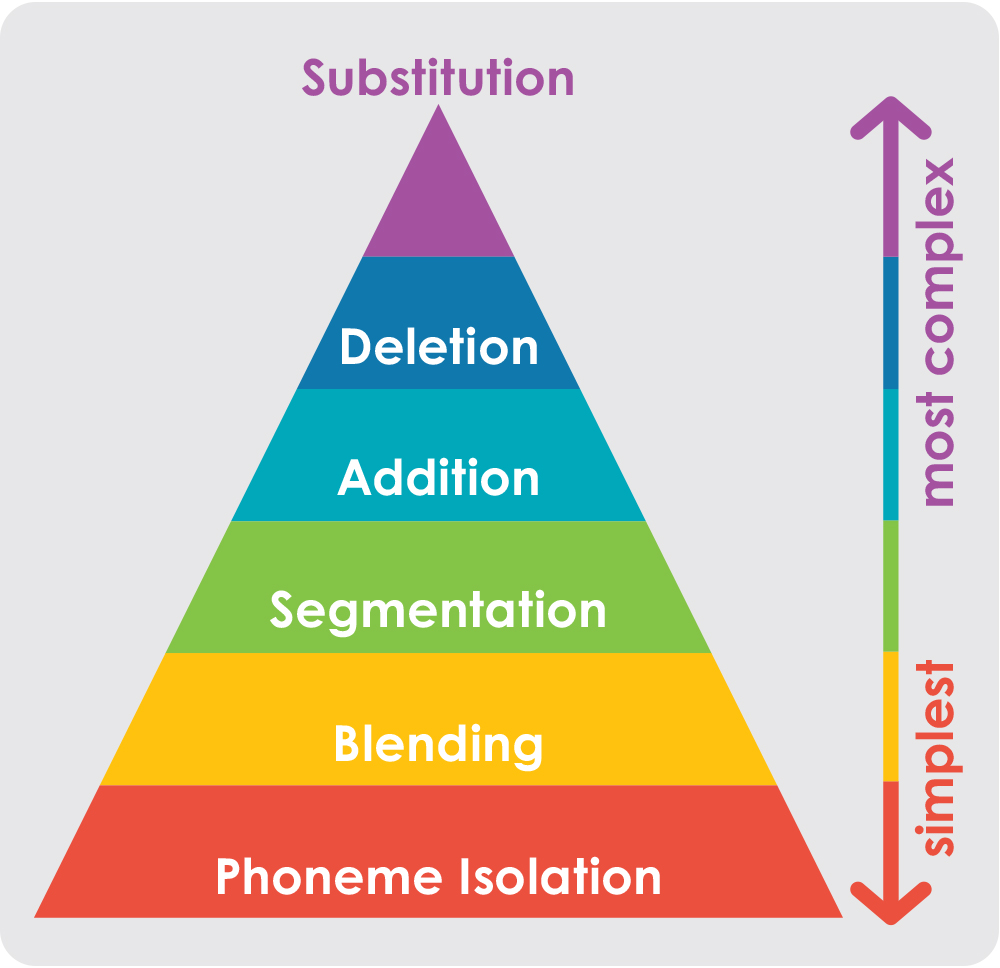English Phonetics Diary (9)
 |
| source: https://www.reallygreatreading.com/six-layers-phonemic-awareness |
Recently, I started working with my students on phonetic awareness. I made first attempts to incorporate one or two activities into my lessons. As it went quite well, I wanted to expand my knowledge and further explore the topic of phonemic awareness. I watched a video called ‘3 Examples of Phoneme Manipulation with Deleting Phonemes’ from Learning At The Primary Pond channel.
The presenter - early education teacher and literacy teacher - started from explaining the focus of the video and setting the context for the topic. She explained what phoneme deletion is, how it corresponds to other phoneme manipulation skills (addition and substitution) and its difficulty while compared to other skills. Then she introduced three types of phoneme deletion: initial phoneme, final phoneme and second phoneme deletion. At the end, she gave examples for each of them and showed how she would give instructions to students.
One thing that got me especially interested was focusing on oral skills. At first I had no idea how confusing using the written form in these tasks would be. Knowing that letters and sounds don’t always correspond with each other, I didn’t see the possible problems it may cause for students. Once the presenter showed how the word cord transforms into core, I realised how difficult it must be for children. Silent letters aren’t the easiest on their own and then when they appear in those kind of activities, it’s even more challenging.
Overally, I feel like this video wasn’t especially complicated compared to some of the previous ones. I think there was just enough new information at the beginning, so then it was less difficult to understand it. Nonetheless, I benefited from it and gained new understandings, including the differentiation between types of phoneme deletion. I also expanded the number of channels I use to learn more about English. Previously, I would use one until it was providing me with new and useful information, limiting myself a lot. I really wanted to try other channels in upcoming weeks, so for that reason I’m even more happy.
One thing that got me especially interested was focusing on oral skills. At first I had no idea how confusing using the written form in these tasks would be. Knowing that letters and sounds don’t always correspond with each other, I didn’t see the possible problems it may cause for students. Once the presenter showed how the word cord transforms into core, I realised how difficult it must be for children. Silent letters aren’t the easiest on their own and then when they appear in those kind of activities, it’s even more challenging.
Overally, I feel like this video wasn’t especially complicated compared to some of the previous ones. I think there was just enough new information at the beginning, so then it was less difficult to understand it. Nonetheless, I benefited from it and gained new understandings, including the differentiation between types of phoneme deletion. I also expanded the number of channels I use to learn more about English. Previously, I would use one until it was providing me with new and useful information, limiting myself a lot. I really wanted to try other channels in upcoming weeks, so for that reason I’m even more happy.

Comments
Post a Comment